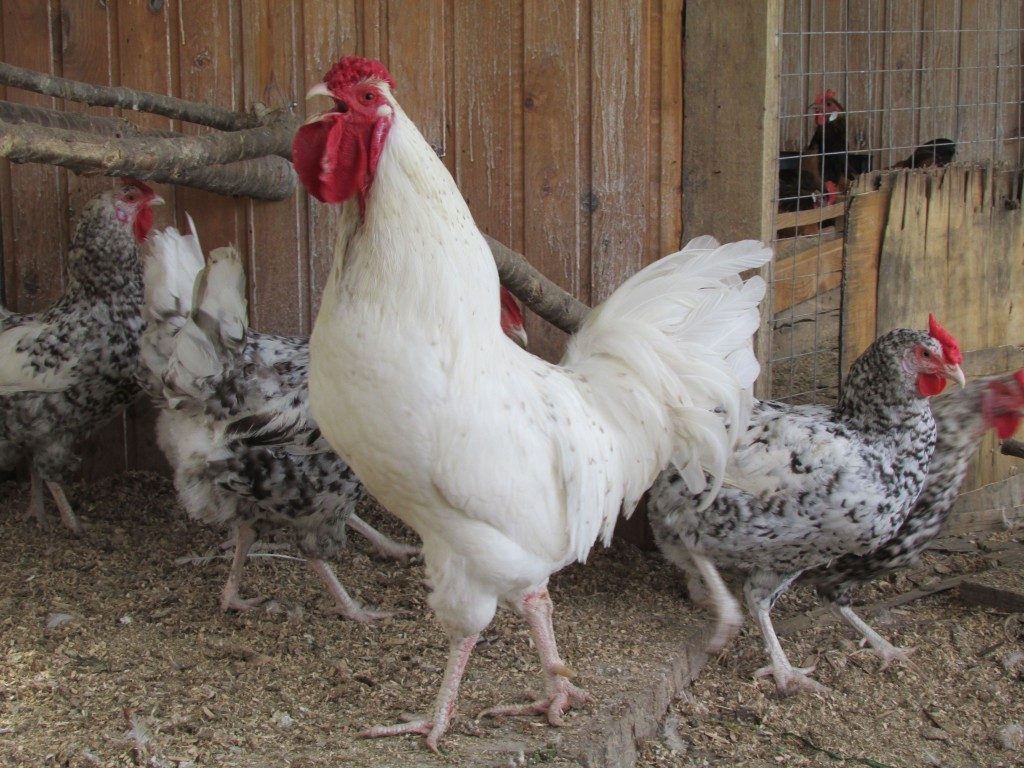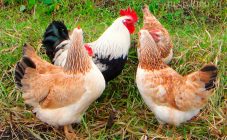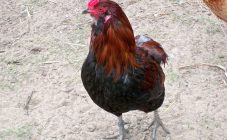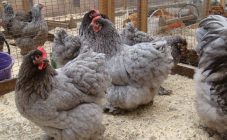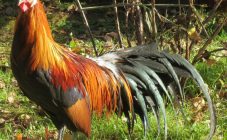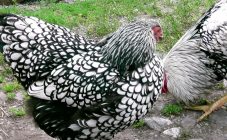Many farms and personal subsidiary plots are engaged in poultry farming. Poultry farms mainly offer common breeds. Rhodonite, leghorns, dominant, can now be found in almost every household. These are egg breeds and crosses. The meat quality of such a bird is at a low level. For small farms, egg and meat breeds are more suitable. One of these is Pushkinskaya.
History of the breed
This breed can be called the pride of Russian breeders. Two research institutes were engaged in breeding. The first is located in the Leningrad region in the city of Pushkin (hence the name), the second - in the Moscow region, in the city of Sergiev Posad. Work on the breed began in the 70s of the last century, 20 years later the gene pool was consolidated and it was officially registered in 2007. It took the Soviet and later Russian breeders of the Academy of Sciences more than 30 years of painstaking work.
This is the first breed bred in modern Russia. The basis was the Australorp hens with Leghorn roosters by introductory crossing with the Moscow White breed of chickens with roosters of the Broiler-6 cross-breed hybrids. The cross was added to try to increase the body weight of the bird, but it had a greater impact on the palatability. The meat became tender, the presentation of the carcass improved. Breeders note that it was bred for keeping in farmsteads and private household plots. The Pushkin breed of chickens has two varieties, they differ in the crest - pink and leaf-shaped. Moreover, in a bird with a leaf-shaped crest, the legs are slightly yellower.
Pushkin chickens: breed description
Pushkin chickens have a large body on high legs. The tail is set vertically. By selection, the plumage of the chicken is gray-striped, the rooster is white with dark tips, the flight feathers, as well as the tail feathers, are white. Roosters have a small elongated head, eyes are orange, bulging. The back tapers towards the tail with a slope of more than 30⁰. The comb is rosy (rose-shaped) or leaf-shaped. The beak is of medium length and is sharply bent downward. The lobes are white-pink, the face is red, the earrings are also red, rounded, rather long. The chest and abdomen are wide and well developed. The exterior of the Pushkin chicken is the same. The wings are slightly lowered, tightly pressed and more horizontally set.
Sexual maturity occurs from 22-24 weeks, the weight of an egg from a one-year-old bird is 61-62 g. The creators of the breed give the following data on the egg: fertilization - 90-93%, egg production - 190-220, record holders up to 290 per year, chick hatching from 40-week-old chickens are 80-85%. The shell color is light cream, white.
The live weight of chickens at 7 weeks is 900-1000 g of a cockerel and up to 800 g of a chicken. Average indicators for the weight of an adult chicken livestock are 1.9-2.1 kg. and roosters 2.5 - 2.7 kg.
Maintenance and care
The breed was bred specifically for small farms, personal backyards and household plots, and is distinguished by its unpretentiousness. If the farmer lives in the northern, northeastern regions of the country, it is better to purchase chickens from St. Petersburg - with a pink-shaped crest, for southern regions with a leaf-shaped one - from Moscow. Pushkinskaya well tolerates cold and, under appropriate conditions of keeping and feeding, continues to rush even in winter.
Before purchasing a bird, it is necessary to prepare a place where it will be kept until the age of 5.5-6 months, so that access to food and water is constant.
Chicks
If the farm has an incubator, you can purchase a hatching egg and get the young yourself. Hatch rates are standard - 80-85%. Chicks hatch in heaps on days 19-20, have good immunity. After excretion on the first day, they do not eat, they can drink a little water. The next day, you need to drink them with vitamins, now in veterinary pharmacies special "first aid kits" are sold for this.
The Pushkin chicken is yellow, with one or more pronounced dark spots on the back. From the first days of life, the chickens are given starter feed.
Young growth
After 3-4 weeks, the bird is transferred to a regular diet. Depending on the preference of the farmer, these can be:
- wheat,
- oats,
- barley, both crushed and whole,
- various finely chopped greens,
- roots,
- apples.
The menu should contain crushed shell, chalk and bone meal. Any new type of feed is introduced into the diet carefully, in small portions. After a month of keeping, it is advisable to separate the females from the males. It is easy to identify them by color. At 5-6 months, excess males are discarded. The best specimens in terms of weight and breed qualities are left to the tribe at a rate of 1: 12-15 hens. They are added to the main herd after six months from the date of birth.
From late August to early September, daylight hours in the hen house are artificially increased by 15 minutes daily to 17 hours a day. This can be done using special timers that are sold in any electrical store. Pullets begin to rush at 5.5-6, in some cases 8-9 months. This is influenced by complete feeding, daylight hours and conditions of detention.
Adult bird
There are 2 ways to keep poultry:
- without walking (cage),
- with walking.
In the first case, the size of the cage is individual, so to speak, "in place", at the rate of 4 heads per 1 sq. M. In the cages, it is desirable to organize nipple drinking and constant access to food. The floor of the cage is made with a slope for rolling eggs. Height not less than 70 cm. Roost is not required.
When walking, it is advisable to make an aviary 2 times the size of an enclosed space. The walk should be fenced off with a 25 × 25 or 25 × 50 mesh and covered with a roof. This is done in order to protect the livestock from predators and birds, especially sparrows. Feeders and drinkers should be located both in the walking area and in a closed one. Nests can be made from scrap material. The main thing is to install them in a dark, dry place, the pestle chicken loves such places. Roosts must be done at the same level, with a height of 60 centimeters.
The diet of an adult bird should be limited. Access to food should no longer be constant, but dosed. Feeding should be 3 times a day. In the morning 25%, at lunchtime 25% and in the evening 50% of the daily diet. Up to 120-130 g of compound feed in the morning and in the evening are counted on a laying hen per day; in the afternoon, you should feed it with herbs, root crops, and kitchen waste. For roosters, the norm is slightly lower, up to 100 g. In general, hens are omnivorous. Just some food, for example, large greens, etc. must be crushed. For this it is worth purchasing a feed chopper on the farm.
Pros and cons
The breed is distinguished by its endurance and unpretentiousness. With the right content, it rushes even in frost. After slaughter, the carcass has a presentation. Egg production is maintained for 3-4 years.
The disadvantages of a variegated laying hen are fearfulness, a lost hatching instinct.
A bird of this breed is beneficial for breeding in backyards throughout the country.High egg production and good carcass yield allows you to organize a good business. Recently, Pushkin's chickens are popular, which means that it will not be difficult to sell them. To organize a business, you need very little: a feed chopper and an incubator, aviaries or cages and livestock.
